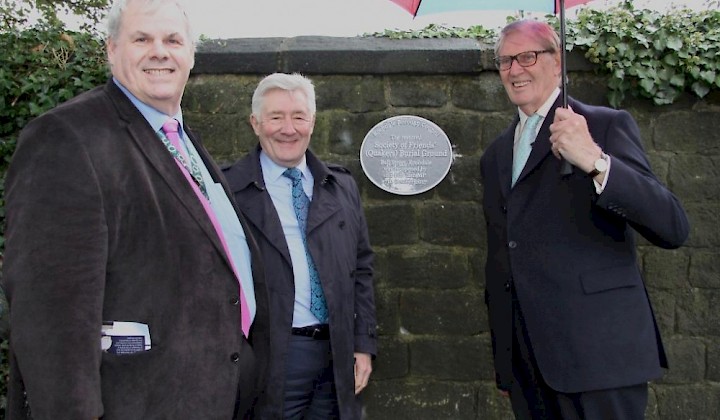The final resting place of Rochdale’s most famous son, the leading parliamentarian John Bright, has re-opened after a council revamp.
The Quaker burial ground where Bright was laid to rest in 1889 has new pathways and railings, as well as interpretation boards detailing the fascinating history of the site and John Bright himself. New benches and trees will be added in the next few months.
The re-opening of the area, which is now known as Ball Street Gardens, was marked with a celebration, which was attended by special guest, the MP for Stone in Staffordshire, Sir Bill Cash, a descendant of Bright’s.
Bright, who was born in Greenbank, Rochdale in 1811, rose to become one of the most prominent politicians in Victorian England. He is best known for playing a leading role, alongside Rochdale MP Richard Cobden, in the abolition of the corn laws, which kept the price of food high by imposing tariffs on imported grain, to protect landowners’ interests.
Bright was also fiercely anti-slavery; a position which brought him into close contact with the American President Abraham Lincoln, who became a close personal friend. Their friendship was such that there is a bust of Bright in the White House in Washington.
Councillor Richard Farnell, leader of Rochdale Borough Council, said: “John Bright was a towering figure in British politics and a major part, alongside the Rochdale Pioneers, of our borough’s great radical tradition, of which I am so proud.
“Bright did so much to improve the lives of ordinary working people and also fought for those whose lives were blighted by slavery across the Atlantic. When Abraham Lincoln was assassinated, he had a letter from Bright in his pocket.
“This restoration honours a great man and also gives our residents and visitors a beautiful tranquil space, in which they can find out more about our fascinating history.”
The site was also home to St Stephen’s Church. That too followed the radical tradition, being a focal point for non-conformist worshippers, before its demolition in 1949.
Local Quakers, Rae Street and John Griffiths, also attended on the day, alongside the Mayor of Rochdale, Councillor Ian Duckworth.
The makeover was funded by section 106 developer contributions from the nearby Dean Street residential scheme.
09 Oct 2017

